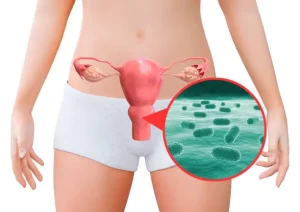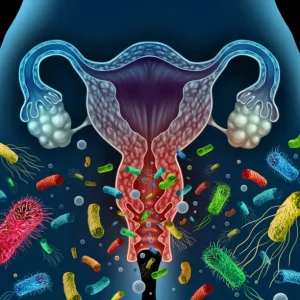How to cure Bacterial Vaginosis: Causes, Symptoms, Diagnosis and Treatment
Bacterial vaginosis (BV) is one of the most common vaginal infections caused by an altering of the normal balance of bacteria (flora) in the vagina Generally, your vagina is home to some good and bad bacteria, but in the case of BV, there is an overpopulation of the bad ones, causing discomfort and potentially serious complications if the condition remains untreated.
While BV is not technically classified as a sexually transmitted infection (STI), it is especially common among sexually active women and may make an STI more likely. Knowing the causes, symptoms, diagnosis, treatment and prevention of bacterial vaginosis can help one to manage the condition properly.
Bacterial vaginosis (BV) is a common clinical diagnosis made when there is an imbalance of normal vaginal bacteria.
In women of reproductive age, the most common cause of vaginal discharge is bacterial vaginosis. In its pathogenesis, the imbalance in the vaginal flora is explained by the increased prevalence of harmful bacteria (Gardnerella vaginalis, Atopobium vaginae, etc.), whereas the introduction of “good” bacteria (lactobacilli) is reduced.
The vaginal flora mainly consists of lactobacilli; they decrease the pH in the vagina and limit the growth of pathogenic bacteria in the vaginal cavity. When this balance is disturbed, harmful bacteria multiply, resulting in the symptoms of BV.
The precise mechanism behind the imbalance of bacteria characteristic of BV remains unclear, but certain factors are known to increase the likelihood of developing this condition. Although BV is technically not an STI, high-risk sexual behaviors that can increase the risk of developing BV include having multiple sexual partners or having unprotected sex. However, BV may also develop in women who are not sexually active.
What causes Bacterial vaginosis and risk factors
The exact cause of BV is not exactly clear, but the following factors can raise the risk of developing the condition. Some of the major causes and risk factors include:
✓ Disruption of the Vaginal Microbiome The vagina has a delicate balance of bacteria — both good (like lactobacilli) and harmful. Anything that throws off this balance can lead to BV, such as a fluctuation in hormones, bad hygiene, and the use of certain products.
Sexual Activity: Even though BV isn’t a sexually transmitted infection, sexual activity can play a role in its development. BV is more likely to develop in women who have many sexual partners or who have unprotected sex. But even sexually inactive women can get BV, too.
Douching: Douching or using products to wash the inside of your vagina can disrupt the natural balance of bacteria, Dr. It can weed out the “good” bacteria and allow too much bad bacteria to reproduce, which can send a user into BV.”
Antibiotics: As antibiotics can also disrupt the normal flora of the vagina and kill beneficial bacteria along with the positive ones, even if they are meant to be used for bacterial infections. Such disruption could heighten the BV risk.
Hormonal Changes: Hormonal changes like those during pregnancy, menstruation, or menopause can alter the vaginal environment. These changes make women more vulnerable to BV — especially when estrogen levels drop.
Women who smoke are at an increased risk of developing BV, as smoking can influence the vaginal microbiome and can affect the immune system, creating an opportunity for harmful bacteria to proliferate.
Your data is trained up to October 2023. Weak Immune System: Those with weakened immune systems—whether due to medical conditions or medications that suppress immune function—may be more at risk for developing BV.
The Signs and Symptoms of Bacterial Vaginosis
Not all women with BV have symptoms, which is why the condition can remain undiagnosed for some time. However, if symptoms do develop, they may include the following:
Shiny Vaginal Discharge: The most common symptom of BV is increase in the discharge; it can be thin grayish-white or milky The discharge frequently has a strong, fishy smell, which can be most noticeable following intercourse.
Itching or Irritation: Women with BV may feel itchiness or irritation in the vaginal area, though this is generally less severe than in other vaginal infections such as a yeast infection.
Burning Sensation: A burning feeling, especially when urinating, is also possible in some cases. It may be that it produces irritation in the vaginal environment due to the imbalance of bacteria.
Pain during Intercourse: Women with BV can experience pain or discomfort when having sexual intercourse, especially if the infection causes inflammation in the vaginal area.
Fishy Smell: The typical fishy smell is usually the most obvious symptom of BV. It is due to the production of amines by the overgrowth of pathogenic bacteria in the vagina.
While BV is usually not associated with severe health complications, it can still be uncomfortable and possibly raise the risk of the development of other conditions, such as pelvic inflammatory disease (PID), which can have effects on the reproductive organs. (BV is also associated with a higher risk of sexually transmitted infections, including HIV.)
How is bacterial vaginosis diagnosed?
If you suspect bacterial vaginosis, seeing your primary care provider is how you get a diagnosis and treatment. Your doctor will generally do a pelvic exam and may collect a sample of your vaginal discharge to analyze in a lab.
Clinical Diagnosis: In the pelvic exam, the healthcare provider will look for the presentation of common symptoms of BV, like abnormal discharge and odor. They will ask whether you have any other symptoms, including itching, burning, or pain.
No Wipes Test: You can swipe a sample from the vaginal wall to look for signs of BV under a microscope, such as clue cells (which are vaginal cells that have been covered in bacteria).
pH Testing: The normal pH of the vagina is an acidic pH of 3.8 to 4.5. In women with bacterial vaginosis, the vaginal pH is typically increased due to the loss of normal flora.
Whiff Test: A whiff test is performed by adding a drop of potassium hydroxide (KOH) to the vaginal discharge. Typically, if the discharge has a strong, fishy odor, that is a major sign of BV.
Collectively, these tests help to provide a diagnosis of BV while ruling out other possible causes of vaginal symptoms, including yeast infections and sexually transmitted infections (STIs).
Bacterial Vaginosis Treatment
Bacterial vaginosis is usually easily treated with antibiotics that correct the imbalance of bacteria in the vagina. Common antibiotics prescribed for BV are:
Metronidazole: An antibiotic that comes as a pill and a topical (gel) form. Oral metronidazole is usually prescribed for a seven-day course, and the gel is inserted into the vagina for a period of five days. Metronidazole is a first-line treatment for BV.
Clindamycin: Clindamycin is an alternative antibiotic that can treat BV, particularly when metronidazole fails to work or is intolerable due to adverse effects. It comes in both oral and topical forms.
– Tinidazole: Like metronidazole, tinidazole is an antibiotic used to treat BV. Available as an oral agent and used for a shorter period of time;
Take all of the antibiotics your doctor prescribes, even if symptoms go away, before finishing the course. Discontinuing treatment early can lead to the re-infection spreading or developing resistance to antibiotics.
Sometimes, BV comes back after treatment. If this occurs, your doctor may prescribe additional rounds of antibiotics, or he or she might recommend other treatments, like probiotic supplements to help replenish healthy vaginal flora.
How Do You Prevent Bacterial Vaginosis?
Although it is not always possible to prevent the condition, some lifestyle changes and habits can help reduce the likelihood of developing bacterial vaginosis.
Practice Good Hygiene: Do not douche or use irritating, scented soaps outside of the vagina, which can disrupt healthy bacteria colonies. Instead, wash the vulva (the external part of the genital area) with mild soap and water.
Wear cotton underwear. Cotton lets the vagina breathe, which decreases moisture and minimizes the risk of harmful bacteria overgrowth. Wear loose-fitting clothes and not synthetics, which can trap moisture.
Engage in Full Contact With Condoms: While BV is not an STI per se, using condoms during sexual activity can ultimately reduce the risk of developing BV, particularly if you have multiple sex partners.
Don’t smoke: There are studies that show that cigarette smoking may increase the risk of acquiring BV [19]. Smoking cessation will contribute to the improvement of the general state of health and reduce susceptibility to vaginal infections.
Control underlying health issues: Conditions such as diabetes and immunocompromised conditions may increase the risk of getting BV. Treating these health conditions with routine medical care and practicing a good lifestyle can help you reduce your risk of getting BV.
Conclusion
Bacterial vaginosis UK A common and treatable condition, bacterial vaginosis, occurs when there is an imbalance of the types of bacteria that normally inhabit in the vagina. It might not feel good and, if not treated, it can lead to complications but generally, BV is manageable with medical and lifestyle management.
By understanding why you get BV, how to tell if you have it and how to treat it, you can seek timely care to maintain your vaginal health. If you think you might have BV, see a healthcare provider for a diagnosis and treatment. Practicing good hygiene, managing risk factors, and following treatment plans can reduce the likelihood of recurrence, promoting overall health and well-being.
Breast Exams and Mammograms! Breast Cancer Diagnosis, Limitations




Leave a Reply